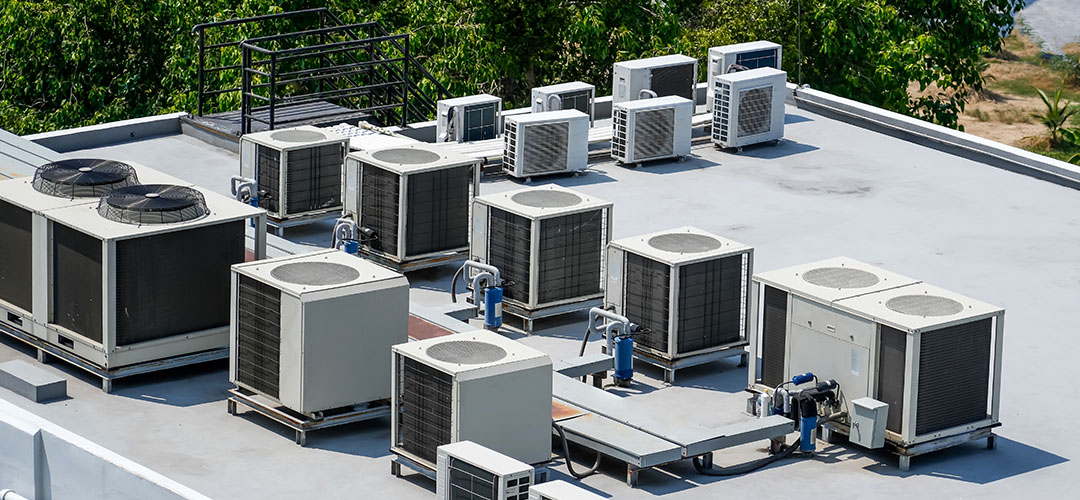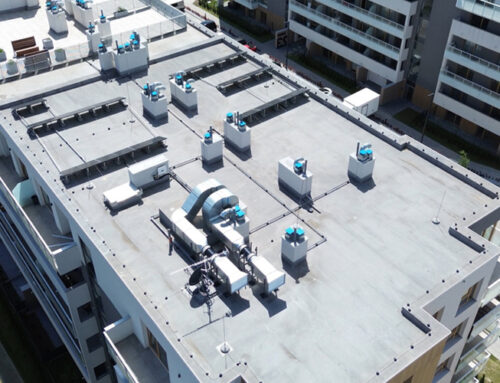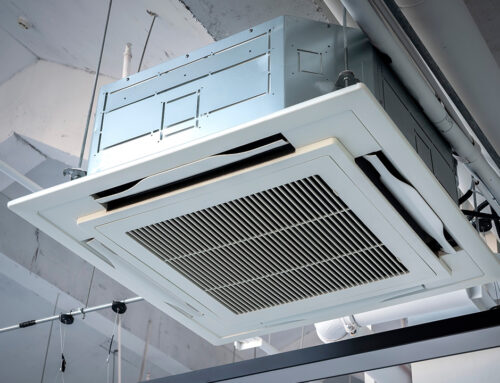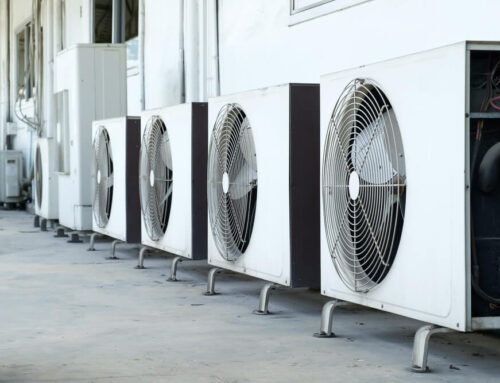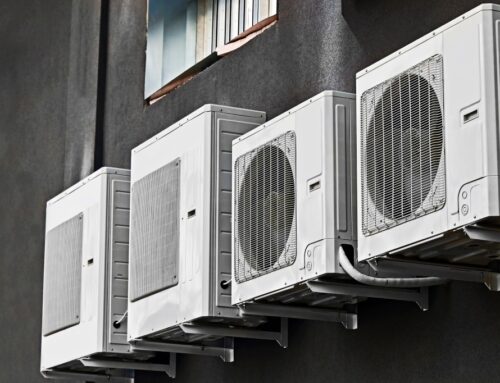Conducting a Commercial AC System Audit is a crucial step for facility managers and business owners looking to boost their HVAC efficiency and performance. With the ever-increasing demand for comfortable indoor environments, it’s more important than ever to ensure your air conditioning systems are running optimally. This guide will walk you through the key areas to focus on during an HVAC audit, such as assessing the system’s age and condition, verifying proper installation and ductwork design, and analyzing energy consumption patterns.
By identifying inefficiencies and opportunities for improvement, you can reduce energy costs and create a more pleasant atmosphere for both staff and customers. Whether you’re new to conducting HVAC system analysis or a seasoned expert, this commercial building energy audit aims to empower you with the knowledge to make informed decisions and optimize your commercial energy audit processes. Let us at Chills AC give you more information!
Evaluating System Age and Condition
Assessing Equipment Lifespan
When assessing the lifespan of your commercial AC equipment, start by reviewing the manufacturer’s guidelines and any maintenance records. These documents provide insight into the expected operational tenure and any past issues that might affect longevity. Generally, commercial AC systems have a lifespan of 15 to 20 years, but this can vary based on usage and maintenance. Consider the age of your system and compare it with the current technological advancements in HVAC systems. Older models might lack energy-efficient features that newer systems offer.
Additionally, inspect for signs of wear and tear, such as unusual noises, frequent breakdowns, or inconsistent cooling. By evaluating these factors, you can determine whether continuing repairs are cost-effective or if replacement would be more beneficial. Ultimately, understanding your system’s lifespan helps in planning for upgrades, ensuring efficient performance, and managing costs effectively over time.
Identifying Wear and Tear
Identifying signs of wear and tear in your commercial AC system is essential to prevent minor issues from escalating into major problems. Begin by examining the physical condition of the system components, such as the compressor, condenser, and evaporator coils. Look for visible damage, rust, or corrosion, which can indicate age-related deterioration. Additionally, pay attention to any unusual sounds during operation, such as rattling or grinding, as these can signal mechanical issues.
Check for leaks or moisture accumulation around the unit, which might suggest refrigerant leaks or drainage problems. Inspect the ductwork for any gaps or disconnections that could compromise airflow efficiency. Regular monitoring of these elements allows for timely maintenance and can enhance system longevity. Early detection of wear and tear not only ensures the system’s optimal performance but also helps in maintaining a comfortable indoor environment while minimizing potential repair costs.
Planning for Replacement
Planning for the replacement of your commercial AC system involves assessing both current performance and future needs. Start by evaluating whether the system meets your cooling demands efficiently. Frequent repairs, rising energy bills, or an inability to maintain consistent temperatures may indicate it’s time for an upgrade. Consider the benefits of newer, energy-efficient models that offer better performance and lower operating costs.
Factor in the age of your existing equipment; if it’s nearing or past its expected lifespan, replacement may be more cost-effective in the long run. Additionally, align the timing of replacement with your business’s operational cycles to minimize disruptions. Budgeting for a new system involves considering not just the purchase price, but also installation costs and potential savings on energy bills. By carefully planning for replacement, businesses can ensure continued comfort and efficiency while optimizing their investment in HVAC technology.
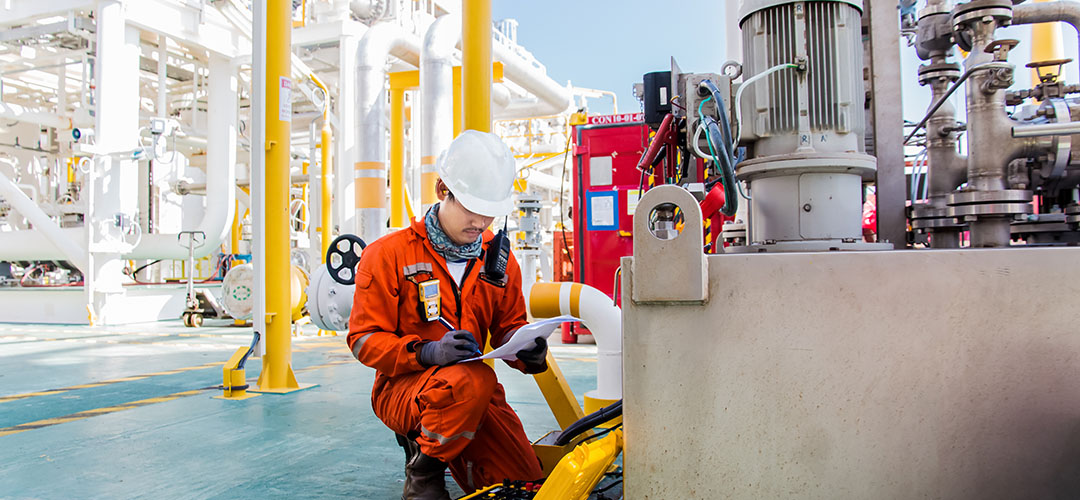
Installation and Ductwork Design
Ensuring Proper Installation
Proper installation of your commercial AC system is crucial for optimal performance and longevity. Begin by hiring qualified HVAC professionals who understand the specific requirements of commercial systems. An improperly installed unit can lead to inefficient operation, higher energy costs, and more frequent repairs. During installation, ensure that the system is appropriately sized for your building’s cooling needs. An undersized unit will struggle to maintain the desired temperature, while an oversized system can lead to short cycling and increased wear.
Additionally, verify that all components are securely connected and that refrigerant levels are accurate to avoid leaks and inefficiencies. Proper installation also involves calibrating the thermostat and ensuring that the airflow is balanced throughout the ductwork. By prioritizing correct installation practices, you can enhance system efficiency, reduce operational costs, and extend the lifespan of your HVAC equipment, ultimately creating a more comfortable environment for occupants.
Examining Ductwork Layout
Examining the ductwork layout is vital for ensuring efficient airflow and overall system performance in your commercial AC setup. Begin by reviewing the design to ensure it facilitates even distribution of air throughout the building. Poorly designed ductwork can lead to hot or cold spots, reducing comfort and increasing energy consumption. Check for any kinks, bends, or obstructions that might impede airflow. Leaks or improperly sealed joints can significantly affect efficiency by allowing conditioned air to escape.
Additionally, ensure ducts are properly insulated to prevent energy loss, particularly in unconditioned spaces like attics or crawl spaces. Consider the placement of registers and returns to ensure optimal air circulation. If issues are identified, consult with HVAC professionals to redesign or seal ductwork as needed. By thoroughly examining and maintaining your ductwork layout, you can enhance HVAC efficiency, reduce energy costs, and ensure a comfortable environment for building occupants.
Detecting Airflow Issues
Detecting airflow issues in your commercial AC system is essential for maintaining efficiency and comfort. Begin by observing any uneven temperatures or weak airflow in different parts of the building, which can indicate ductwork problems or blockages. Listen for whistles or hissing sounds that might suggest leaks in the ducts. Inspect filters regularly and replace them if they’re clogged, as dirty filters can restrict airflow and strain the system. Additionally, check vents and registers for obstructions such as furniture or equipment that might impede airflow.
Utilize airflow meters or anemometers to measure the velocity of air at various points in the duct system to identify discrepancies. If airflow issues persist, it might be necessary to consult HVAC professionals to perform a comprehensive assessment and implement corrective measures. By addressing airflow problems promptly, you can improve system efficiency, lower energy costs, and enhance the overall comfort of the building environment.

Analyzing Energy Consumption Patterns
Reviewing Utility Bills
Reviewing utility bills is a fundamental step in analyzing energy consumption patterns for your commercial AC system. Start by comparing energy use across different billing periods to identify any unusual spikes or trends. Such variations may indicate inefficiencies or issues within the HVAC system. Take note of seasonal changes in usage, which can help anticipate future costs and identify periods of excessive energy consumption. Additionally, examine the cost per kilowatt-hour to understand how rate changes may impact your overall expenses.
Analyzing historical data can uncover patterns, allowing you to correlate higher consumption with specific operational changes or equipment malfunctions. Consider employing energy management software to track and visualize consumption data over time. If discrepancies persist, seeking insights from HVAC professionals can help pinpoint specific inefficiencies or areas for improvement. By diligently reviewing utility bills, you can identify opportunities to optimize energy use, reduce costs, and enhance the efficiency of your commercial AC system.
Monitoring Peak Usage Times
Monitoring peak usage times is crucial for optimizing energy consumption in your commercial AC system. Start by identifying periods of highest demand, often occurring during business hours or extreme weather conditions. Understanding when these peaks happen allows you to implement strategies to mitigate their impact on energy costs.
Consider using programmable thermostats or building management systems to adjust cooling schedules based on occupancy and outside temperatures, thereby reducing unnecessary energy use during off-peak times. Additionally, analyze whether equipment or operational processes contribute to spikes in energy consumption and explore alternatives or adjustments to improve efficiency. Demand response programs offered by utility companies can also provide incentives to reduce usage during peak periods. By effectively monitoring and managing peak usage, you can lower operational costs, prolong the lifespan of your HVAC equipment, and contribute to a more sustainable energy footprint for your business.
Implementing Energy-Saving Measures
Implementing energy-saving measures is key to reducing the operational costs of your commercial AC system. Begin by integrating smart thermostats to automatically adjust temperatures based on occupancy and time of day, enhancing efficiency without sacrificing comfort. Regular maintenance, such as cleaning coils and replacing filters, ensures the system operates optimally and consumes less energy. Consider upgrading to energy-efficient models or retrofit existing equipment with variable speed drives to optimize performance.
Seal any leaks in ductwork to prevent conditioned air from escaping and ensure proper insulation to maintain desired temperatures with less energy expenditure. Additionally, explore the use of energy management software to monitor and control usage across the building. Educate staff on energy conservation practices, like closing blinds to reduce heat gain from sunlight. By adopting these measures, businesses can significantly lower their energy consumption, reduce costs, and contribute to a more sustainable operational environment.
Identifying Inefficiencies and Improvements
Spotting Common Inefficiencies
Spotting common inefficiencies in your commercial AC system is essential for improving performance and reducing costs. Start by examining the thermostat settings to ensure they align with occupancy patterns and seasonal changes. Misconfigured settings can lead to unnecessary energy use. Inspect air filters regularly, as clogged filters force systems to work harder, increasing energy consumption and wear.
Check for leaks in ductwork, as these can lead to significant energy losses and uneven cooling. Additionally, assess the insulation of your building; inadequate insulation can cause temperature fluctuations that strain the HVAC system. Look for outdated or improperly maintained equipment, as these can be major sources of inefficiency. Consider conducting a professional energy audit to identify less obvious issues and receive tailored recommendations.
By addressing these inefficiencies, you can boost HVAC system performance, lower energy bills, and maintain a more comfortable and consistent indoor environment.
Prioritizing System Upgrades
Prioritizing system upgrades is a strategic approach to enhancing the efficiency and performance of your commercial AC system. Begin by identifying components that are nearing the end of their lifespan or are frequently in need of repairs. Replacing these with modern, energy-efficient models can yield significant cost savings and improved reliability. Evaluate the potential return on investment for each upgrade option, focusing on those that offer the most immediate benefits, such as reduced energy consumption or enhanced operational control.
Consider upgrades like smart thermostats, advanced control systems, or energy-efficient compressors that can optimize performance and adapt to varying conditions. Collaborate with HVAC professionals to assess which upgrades align best with your operational goals and budget constraints. By systematically prioritizing upgrades, you not only improve system efficiency and comfort but also extend the lifespan of your HVAC assets, ensuring a more sustainable and cost-effective operation in the long run.
Enhancing Overall Performance
Enhancing the overall performance of your commercial AC system involves a holistic approach to maintenance, monitoring, and upgrades. Start by implementing a regular maintenance schedule that includes cleaning coils, checking refrigerant levels, and ensuring all components are functioning optimally. This proactive approach minimizes unexpected breakdowns and maintains efficiency. Utilize advanced monitoring tools and energy management systems to gain insights into system performance and identify areas for improvement.
These tools can provide real-time data on energy consumption patterns, helping to fine-tune operations for maximum efficiency. Consider integrating automated control systems that adjust settings based on occupancy and weather conditions, ensuring consistent comfort while reducing energy use. Additionally, invest in staff training to ensure that everyone understands how to operate the system efficiently and recognize signs of potential issues.
Optimizing Comfort and Cost
Balancing Cost and Comfort
Balancing cost and comfort in a commercial AC system is essential for maintaining a productive environment without overspending. Start by setting realistic temperature targets that meet comfort needs without excessive energy use. Utilize programmable thermostats to adjust settings during off-peak hours or when spaces are unoccupied, reducing unnecessary energy consumption. Regularly review energy bills and consumption data to identify opportunities for savings without compromising on comfort. Invest in energy-efficient upgrades, such as high-efficiency compressors or variable speed fans, which can provide consistent temperatures while lowering operational costs.
Additionally, ensure proper building insulation and window treatments to prevent heat gain or loss, helping maintain comfortable indoor conditions with less energy. Educate occupants about energy-saving practices, like closing blinds during hot days, to further reduce energy use. By strategically balancing these elements, you can achieve a comfortable atmosphere for occupants while keeping energy expenses in check.
Increasing Staff Productivity
Increasing staff productivity through optimized HVAC comfort is a crucial aspect of workplace efficiency. Comfortable indoor temperatures can significantly impact employee focus, satisfaction, and overall performance. Begin by ensuring that the HVAC system maintains consistent temperatures throughout the workspace, avoiding hot or cold spots that can distract or discomfort staff. Proper ventilation is equally vital, as fresh air circulation helps reduce fatigue and improve concentration.
Implement systems that allow for zone-specific temperature control, enabling adjustments in different areas based on occupancy and preference, thus enhancing comfort for all employees. Regularly solicit feedback from staff regarding comfort levels and make adjustments as needed to ensure the environment supports their productivity. Additionally, integrating automated systems that adapt to usage patterns can maintain optimal conditions with minimal manual intervention.
Improving Customer Experience
Improving customer experience through effective HVAC management can significantly enhance business success. A comfortable environment encourages longer visits and positive impressions, crucial factors in customer satisfaction and retention. Start by ensuring that your commercial AC system maintains a stable, inviting temperature regardless of external weather conditions. Regularly service and maintain the system to prevent unexpected breakdowns that could lead to discomfort.
Consider upgrading to a smart HVAC system that can adapt to peak customer times and maintain optimal conditions with minimal manual intervention. Additionally, ensure proper air quality and ventilation, as clean, fresh air enhances the overall atmosphere and can positively affect customer perceptions. Implement feedback mechanisms to gauge customer satisfaction regarding the environment and make necessary adjustments promptly.
By focusing on these areas, businesses can create a welcoming and pleasant environment that not only meets customer expectations but also enhances their overall experience, encouraging repeat business and positive word-of-mouth recommendations. For all other information, call us today!

